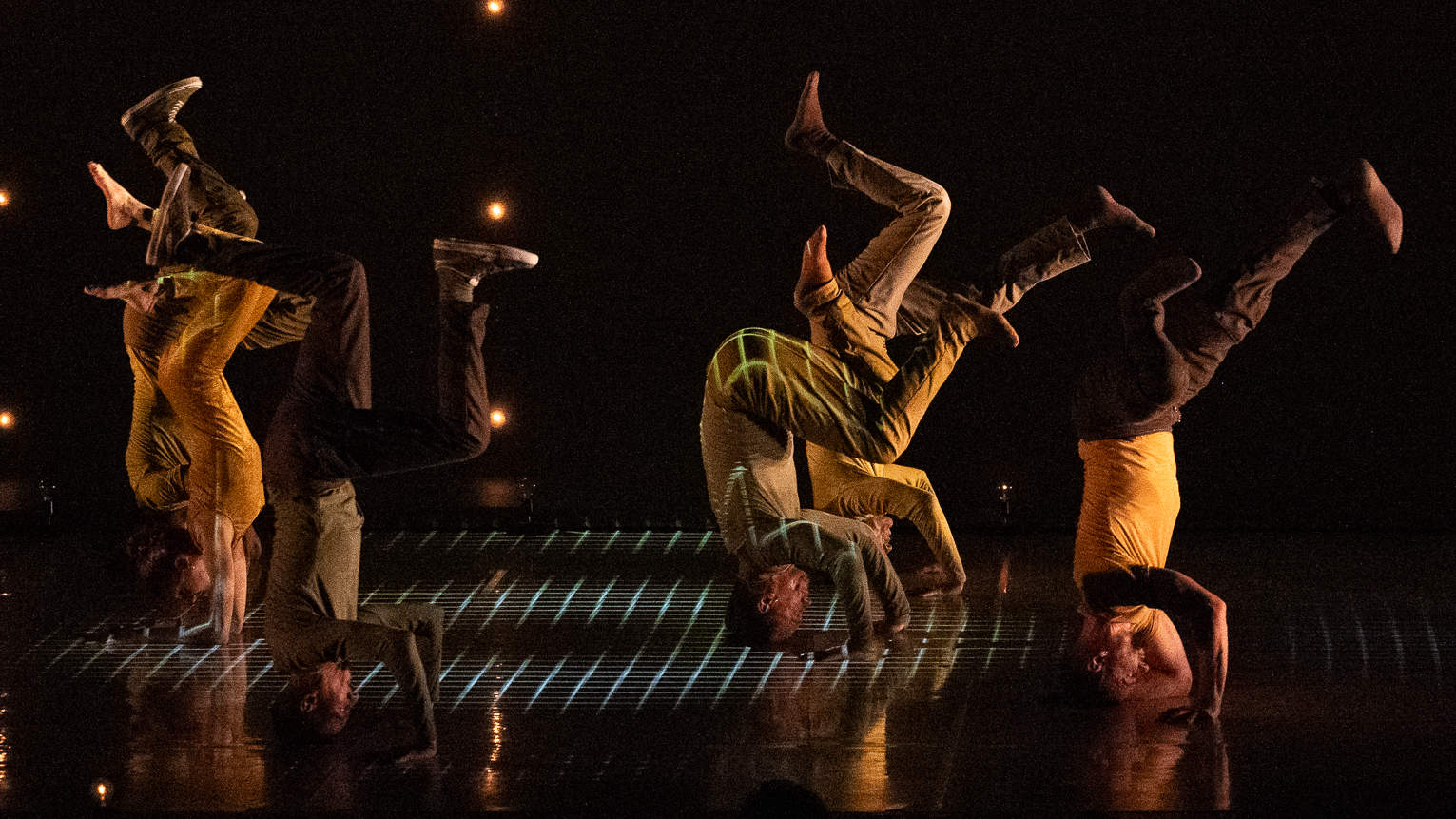The group of men come in slowly, as though this space is new to them — they are front lit as though they are walking into firelight, and music moves around them like wind.
Lights flicker like flames in the dark, and more rise from them like sparks in smoke. But the lantern lights exist in three dimensions, and the points of iridescence lifting from them exist in two.
As Compagnie Käfig performs their signature work, Pixel, in the newly renovated Ted Shawn Theatre, world-class hip hop dancers are navigating a digital world.
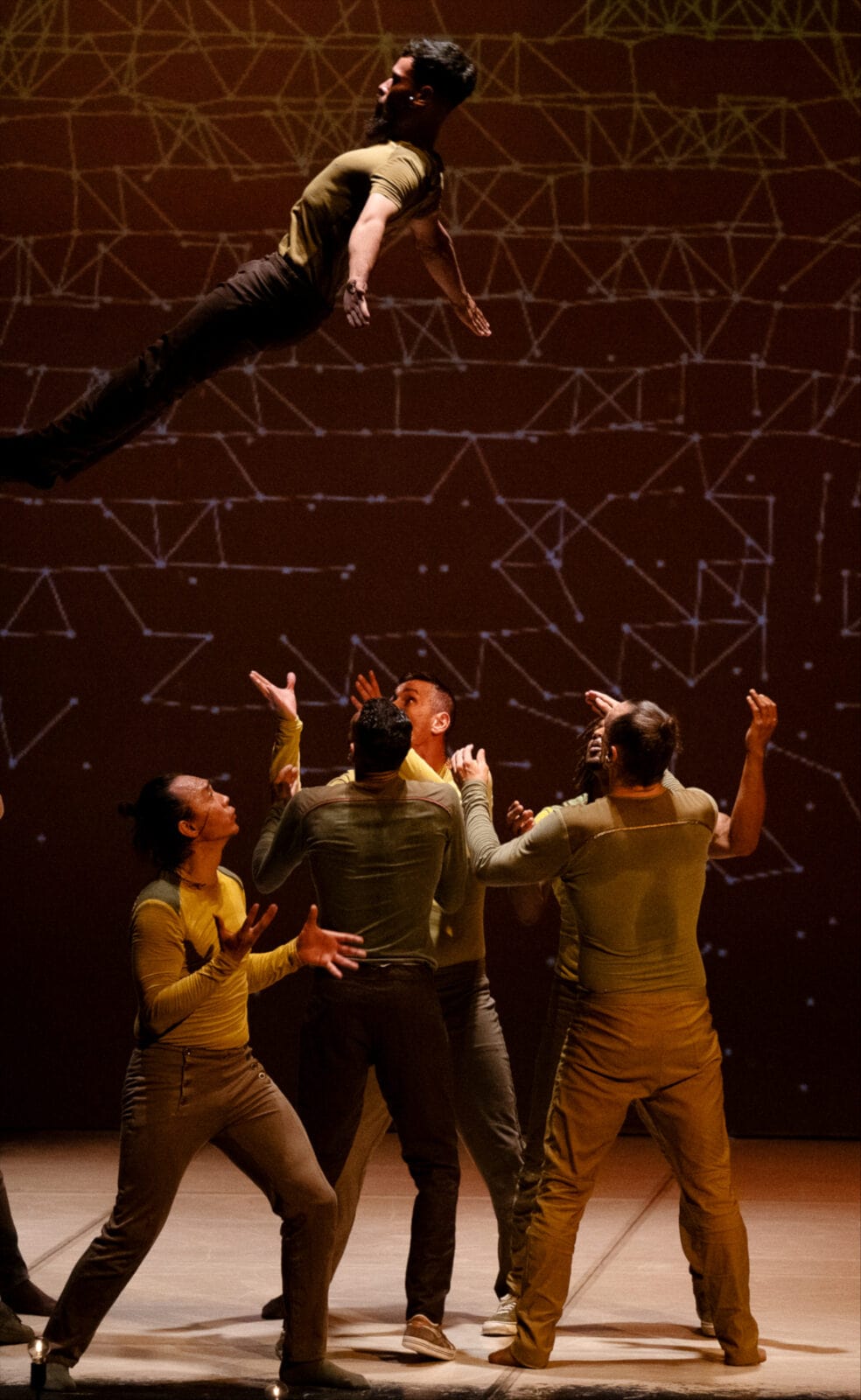
Dancers in Compagnie Käfig perform with lights in digital projections in in 'Pixel.' Press photo courtesy of Jacob's Pillow Dance Festival
A dancer draws the light out of the lamp, reaches up to touch the meteorites, watches the glow move outward from his hands. He experiments in visceral movements, fluid and forceful in the mind of internationally acclaimed choreographer Mourad Merzouki, a leading figure in the global world of hip hop since the 1990s.
Merzouki founded Compagnie Käfig to expand the world of hiphop, crossing into circus and martial arts, film and live music, and he describes Pixel as a meeting of dancers and acrobats, adepts in physical arts playing with a virtual landscape.
‘The principle of my work is to reunite worlds that have grown apart.’ — choreographer Mourad Merzouki
“The principle of my work is to reunite worlds that have grown apart,” he says, “to make work together across generations and epochs and styles that at the core see each other as opposed. For me the goal is to invent unexpected conversations, and to make them despite our differences.
“… I see the world today needs these messages, to live these experiences, where in spite of our differences we can build and advance together.”
(While he and the company were traveling internationally, he has generously responded by email to questions in French, so his answers here appear in translation.)
His first national and international performances connected him with places where dance could meet people directly — refugee camps in Croatia and Morocco, contemporary dance festivals in Paris, merging hip hop with many forms of expression and skill.
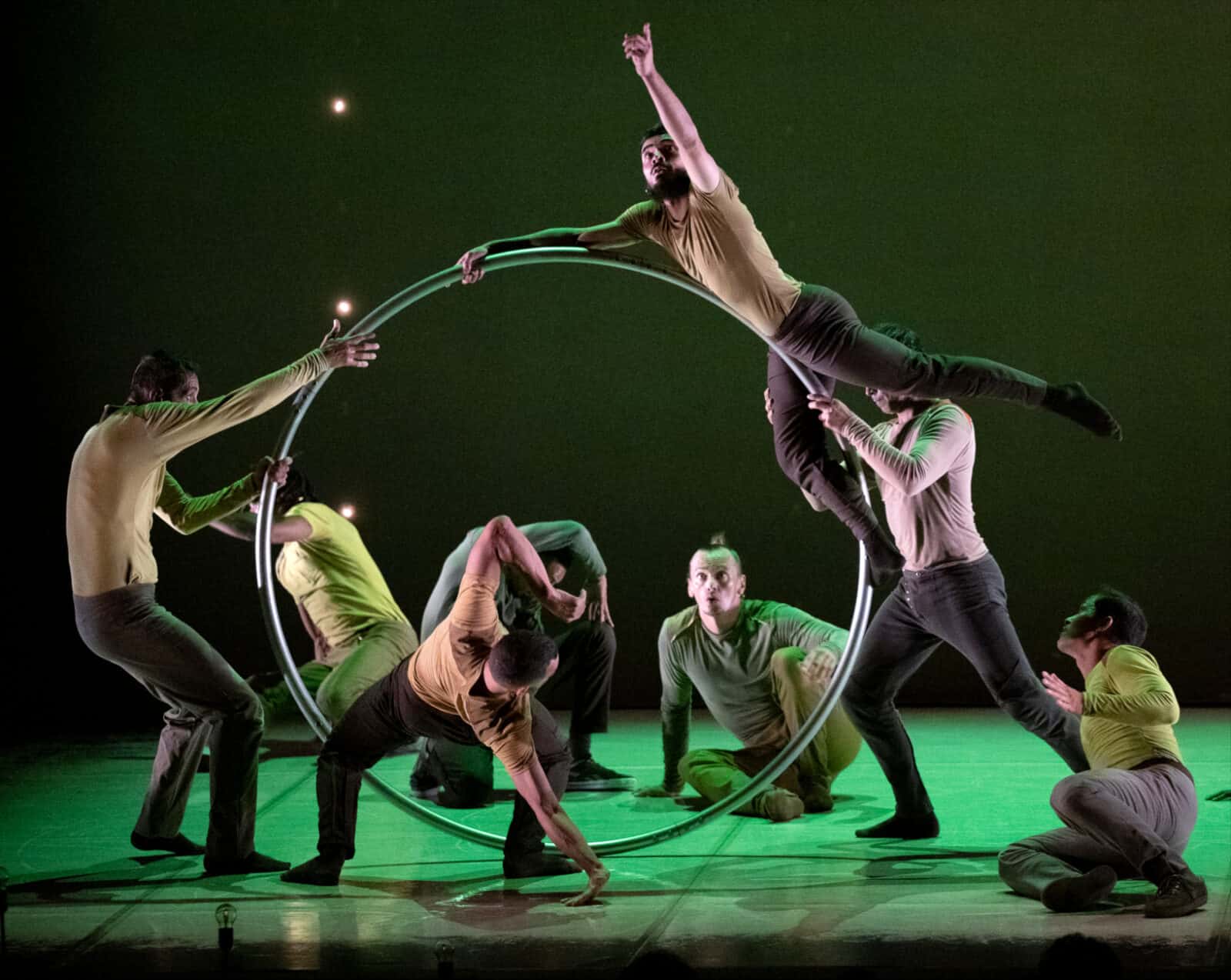
Dancers in Compagnie Käfig perform with lights in digital projections in in 'Pixel.' Press photo courtesy of Jacob's Pillow Dance Festival
He began his own dance trajectory in the Lyons neighborhood of Saint-Priest, in the school of circus arts, basketball games and boxing gym and rehearsal rooms. He formed his first dance company in 1994 with a group of close friends, and they performed in collaboration with contemporary dancers and choreographers in many forms.
Today he makes his presence known on a global stage. He is recognized as a Commander of Arts and Letters, a French national honor. He has served as director of the Centre Chorégraphique National de Créteil et du Val-de-Marne for more than 20 years and has led festivals and collaborations, from the round-the-world sailing race the Vendée Globe to the 20th Nuit Blanche en Paris, blending choreography in public places across the city.
For Pixel, he has collaborated with digital artists Adrien Mondot and Claire Bardainne and their team of artists in Lyon, who collaborate with performers in research and creation in living and digital arts.
He reached out to them, he said, when he was asked to create choreography for a festival of digital arts, and he admires their pure approach, working only with points of light and color, only pixels, and the position they give film and image, set lightly, ingeniously on the stage.
‘(They have) a pure approach, working only with points of light and color, only pixels, and the position they give film and image, set lightly, ingeniously on the stage.’
“In our collaboration, they proposed spaces, digital sets and scenes, on which I imagined choreography. They are virtual spaces — the film did not take part in the whole of the spectacle — it remains a dance performance at its core. But it is a meeting with the patterns they proposed that make up part of their repertoire.”
Since their meeting 10 years ago, Pixel has traveled around the world. The dancers improvise in a world that can shift constantly overhead and underfoot — sheltering from a rain of meteorites, orbiting nebulae and spinning circles like galaxies — and turning them into ciphers, the rings of dancers who form in hip hop and give energy to the performer in the center.
Music surrounds them, rhythmic and melodic, encompassing and deft as rain. Composer Armand Amar creates a cinematographic music, Merzouki said, that puts dance first and also understands the principles of film:
“He has a poetic grace in his music, a music that values movement and gives the textures I search for and and the warmth I love in dance.”
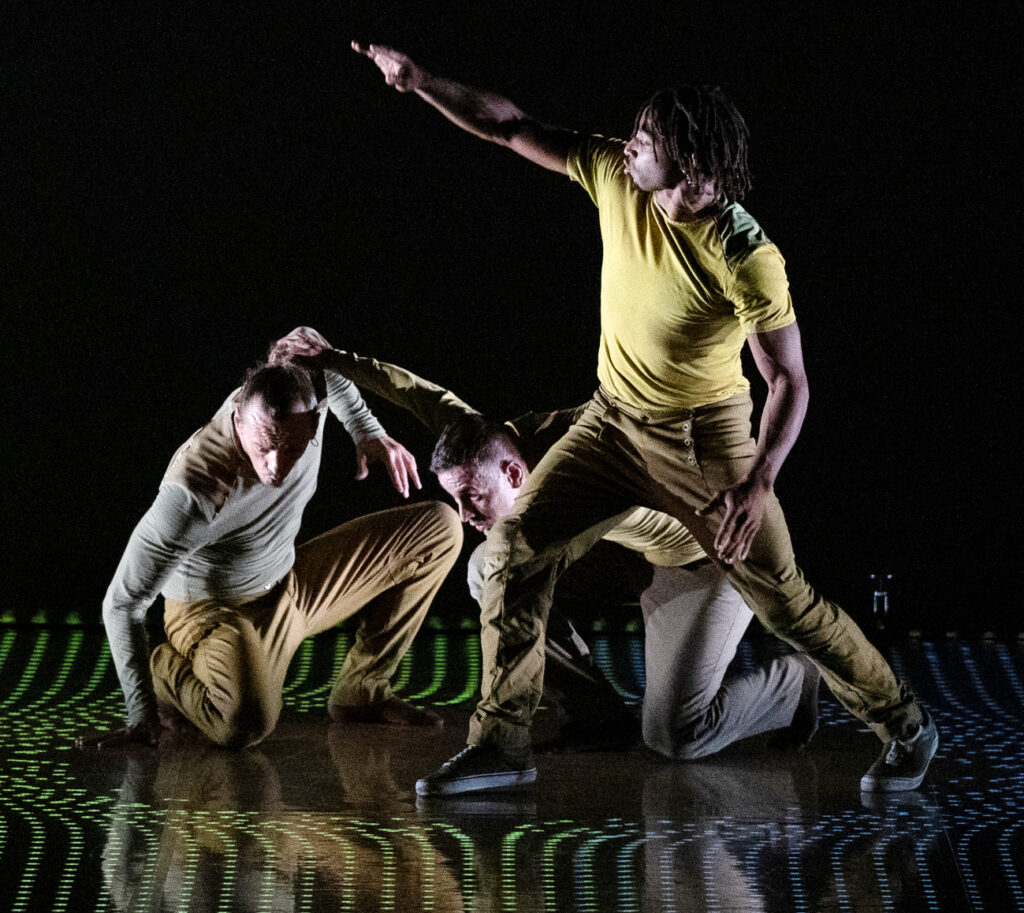
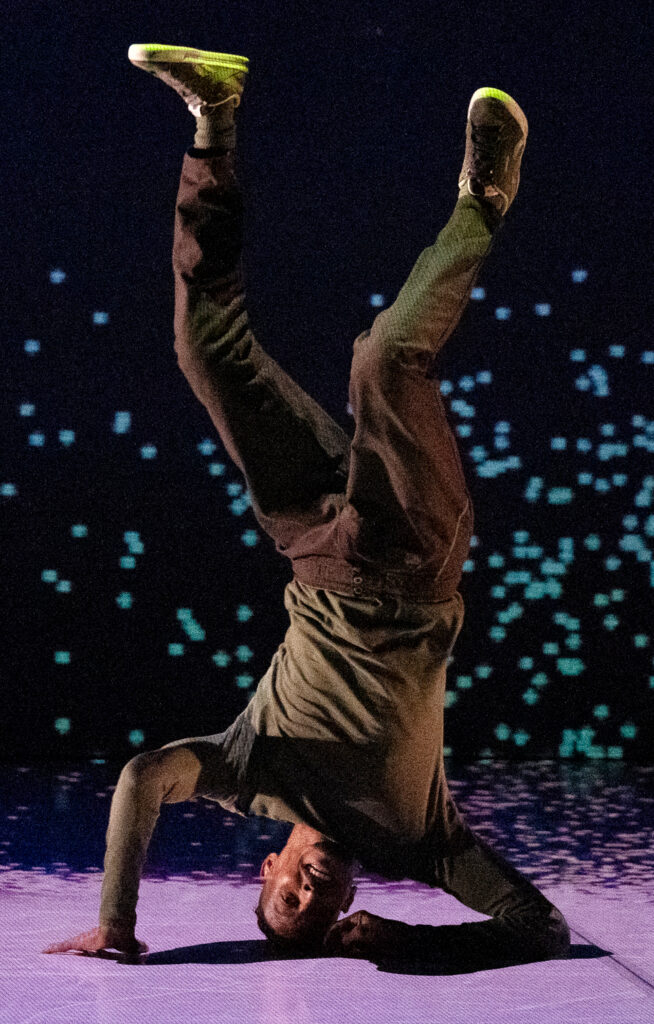

Dancers in Compagnie Käfig perform with lights in digital projections in in 'Pixel.' Press photo courtesy of Jacob's Pillow Dance Festival
Patterns of sound help to guide the relationship between digital and physical, between film and the human body. Shaping a performance between them takes a careful balance, Merzouki said.
He wanted to ensure the digital elements would not become a device or a superficial scrim. The risk with film in a performance, he said, is that people forget the body and the dance, because the film can take the upper hand so quickly.
“For me, with film in a performance, it’s important that the visual elements act in support of the choreography and the dance,” he said. “That’s why I chose (Adrien Mondot and Claire Bardainne’s) work — because they keep the images pure. They are not creating a narrative in the film. The film sculpts the space lightly, and that lets me leave space for movement in the way that’s most expressive.
‘For me, with film in a performance, it’s important that the visual elements act in support of the choreography. … The force of the dance, the energy and generosity … can hold attention and come back to the essential nature of the human body.’
“That’s also why sometimes I lift away the film, so people watching will not feel smothered and crushed by the images. The force of the dance, the energy and generosity that I propose in choreography can hold attention in the end, and come back to the essential nature of the human body.”
Dance is a physical art by nature, an artform of contact and expression — at the core, it is tangible. How does he translate human bodies into an intangible, insubstantial world?
“It’s always a question of dosage and balance,” he said. “The dance will win the contest if the balance is right, if the virtual and impalpable world rests in the right place in the rapport of the body and the choreography. If the film becomes too present, you risk losing the essence of the body and the movement. I worked on that question all through the creative process.”
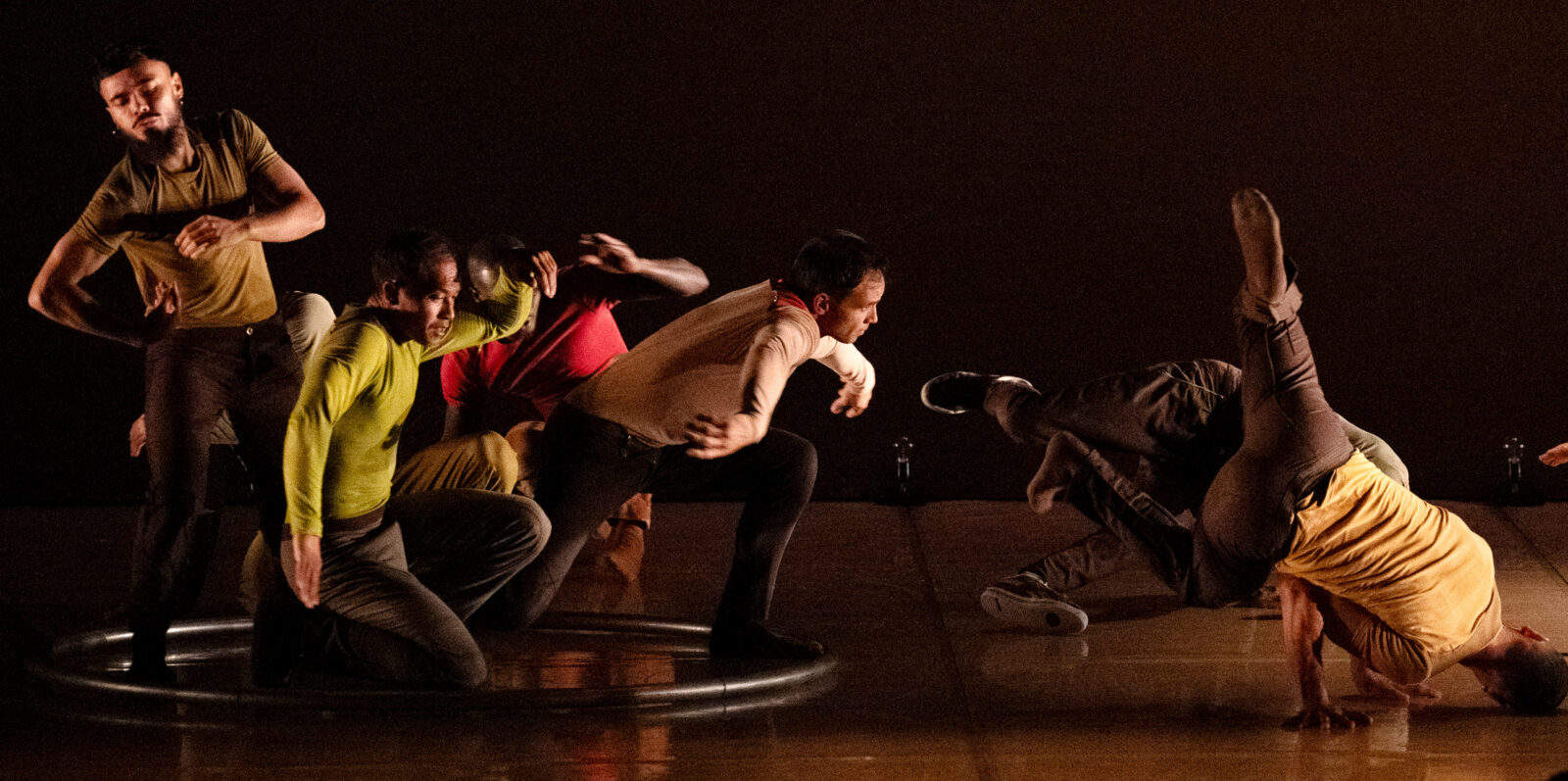
Dancers in Compagnie Käfig perform with lights in digital projections in in 'Pixel.' Press photo courtesy of Jacob's Pillow Dance Festival
In talking about his inspirations for the work, Merzouki he has said that today “we are confronted without cease by images, film, digital media.”
Physical means what belongs to nature — and his work can raise questions what happens in a world that removes the natural — how does this space shape relationships between the dancers, or between the dancers and natural, living ecologies? Merzouki’s choreography is visceral and virtuosic, and in this work almost wholly individual.
Pixel creates few clear interactions between people. The dancers may give physical support, offer a base to flip over, hold a ring for a performer to step into like a figure for Leonardo Da Vinci and role his whole body. They can transform space and possibility with a sense of shimmering awe.
But they are not taking each other’s weight or holding each other’s eyes. They rarely exchange emotion, and those exchanges are often are movements of exclusion. A group expels an interloper. Two dancers move independently and touch only to push each other away.
‘The dance will win the contest if the balance is right, if the virtual and impalpable world rests in the right place in the rapport of the body and the choreography.’
In hip hop tradition, dancers often perform solo, one handing the light to the next, but in a cipher the group will surround the performer and encourage the action, call out, meet their eyes, urge them on. Here the dancers are moving low and grounded and expanding into acrobatic energy, flipping higher than a man’s length, spinning on forehead and wrist and knees.
In their body languages they can seem playful and exploring or alert for the unexpected, responding to unpredictable changes — the surface I’m standing on is moving sideways — now it’s rolling like a wave — the sky is full of falling stars, and they move when I move. What happens if I hold out my hand?
And then the whole company may move in unison, as though they’re all blown by the same wind or pushing against the same current. Often they seem subject to forces larger than a human form.
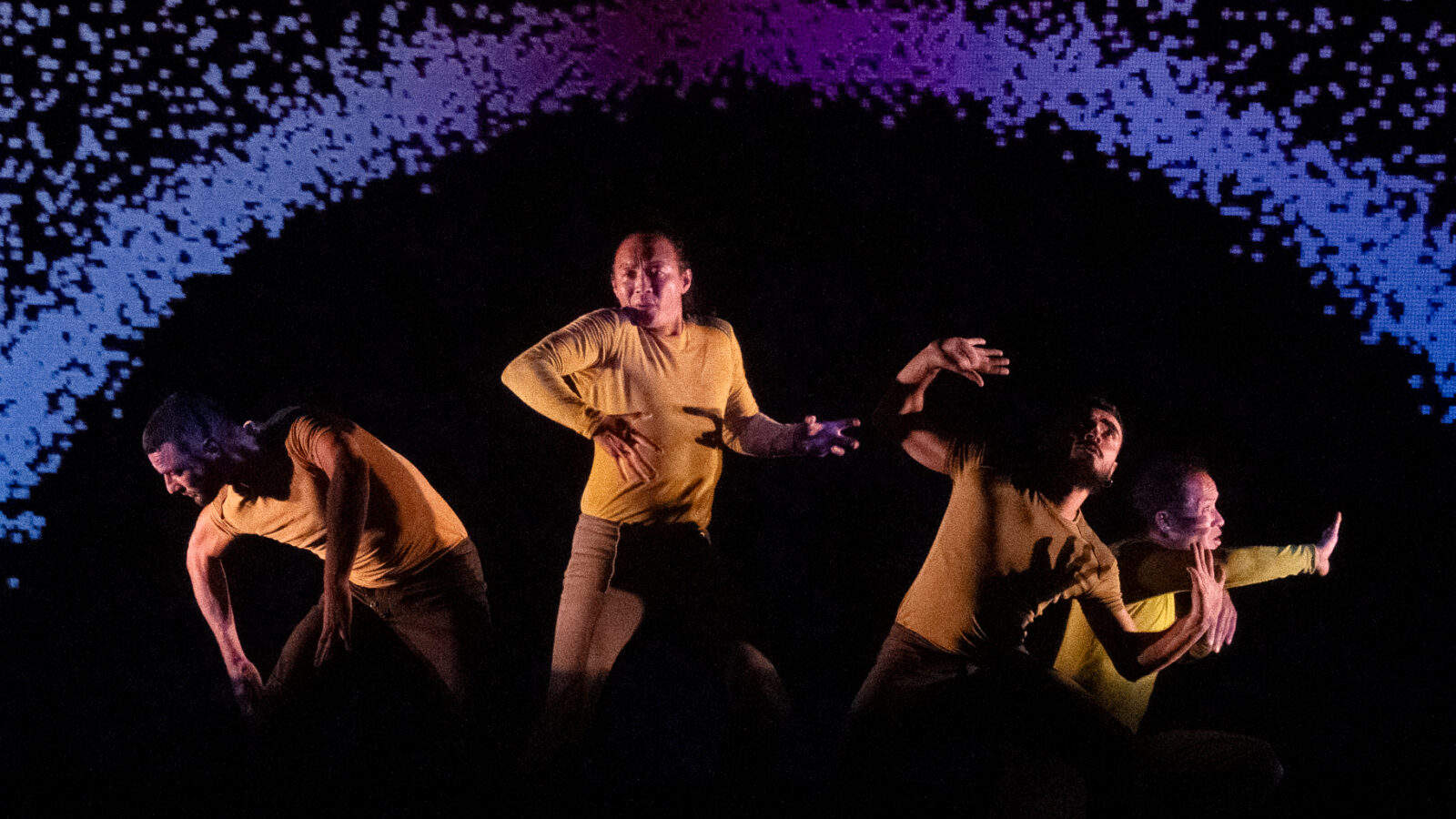
Dancers in Compagnie Käfig perform with lights in digital projections in in 'Pixel.' Press photo courtesy of Jacob's Pillow Dance Festival
They are living in an environment shaped from light — and only from light. This performance makes a place where the scene is minimal, Merzouki said. He finds potential in the design.
“In the time since we first made the work,” he said, “it’s interesting to see that when we ask ecological questions, the sets of performances can provoke or engender an ecological point of view in themselves.
“Having grand sets can also pose ecological questions — the sets and props used and thrown away, transported by planes and trucks. In this performance, the ecological approach is in that recognition.”
And so his dancers walk into a place of energy without matter, as though they are taking their first steps on another planet or a moon with a surface of grey rock and a different gravity. And then they launch into space.
“Like a watermark,” he said, “what I put at the front of all my performances, Pixel and my creations past and future, what I incarnate in all the encounters I envision to come out of my familiar worlds and to try to move forward with the diverse and multiple — in thoughts, communities, people, ways of being — even when to me they are unknown.”

